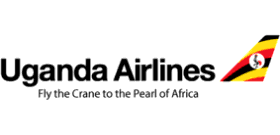Uganda's Bold Vision: Uniting Air Travel and Tourism for National Ascent
Uganda's aviation sector is currently experiencing a robust resurgence, marking its strongest recovery in decades. In 2024, Entebbe International Airport recorded an impressive over 2.2 million international passengers, successfully surpassing its pre-pandemic activity levels. This positive trend extends to cargo, with exports of high-value goods such as flowers and fish steadily climbing. Adding to this momentum, Uganda Airlines, equipped with a modern fleet of A330neos and CRJ900s, has significantly expanded its operational footprint, now connecting to 14 countries, serving 18 distinct destinations via 21 routes. Concurrently, regional airports like Arua and Mbarara are reporting substantial double and triple-digit growth figures, signaling broad-based progress within the nation's air transport infrastructure.
However, this apparent progress within aviation risks becoming a 'hollow victory' if not intrinsically linked to the burgeoning tourism sector. Airplanes and airports are not ultimate objectives; rather, they serve as crucial enablers for broader economic transformation. Tourism emerges as the logical and indispensable partner capable of converting these aviation gains into tangible national prosperity. After all, travelers choose destinations, and Uganda boasts an array of unparalleled tourism assets. The nation's unique geographical position straddling the equator encompasses the majestic Rwenzori Mountains, the historical source of the Nile, and half of the world's remaining mountain gorilla population. Culturally, events such as the Nyege Nyege festival in Jinja significantly boost local economies, while the Rwenzori Marathon is rapidly establishing itself as a prominent sports tourism attraction. Furthermore, Kampala has repeatedly demonstrated its capability to host major international conferences, including the Non-Aligned Movement Summit and various continental agriculture forums, which draw a concentrated influx of delegates, media, and business leaders.
Despite these undeniable strengths, Uganda's current aviation system is not optimally configured to fully harness this demand. Africa generally remains one of the most expensive continents for air travel, characterized by limited intra-continental route options. This often leads to peculiar travel patterns, such as a traveler from West Africa finding it more convenient to transit through Dubai rather than flying directly to attend an event like Nyege Nyege. Domestically, airports such as Kasese and Gulu, despite registering some growth, remain largely underutilized. Uganda Airlines, while expanding its African destinations, has yet to fully align its flight schedules and pricing strategies with the nation's tourism calendars and major events.
In contrast, successful models of aviation-tourism integration exist within the continent. Cape Town Air Access in South Africa exemplifies this, having forged a strategic partnership between airlines, the government, and the tourism sector. This initiative meticulously targeted routes that directly aligned with leisure and business demands, resulting in the addition of over a dozen new international routes and a tourism windfall worth billions of rand within five years. Similarly, Rwanda has adeptly leveraged RwandAir as a pivotal instrument for its Meetings, Incentives, Conferences, and Exhibitions (MICE) strategy. Rwanda strategically pairs every major conference bid with guaranteed air access, hotel readiness, and a comprehensive tourism package, showcasing a highly orchestrated approach.
Uganda, however, finds its aviation and tourism sectors largely operating on parallel tracks. The national airline focuses on selling flights, while the Uganda Tourism Board concentrates on promoting the country's primary attractions. There is a noticeable absence of a unified platform where these entities can collaboratively strategize and co-create demand. To bridge this gap, three priority steps are essential for deliberate integration. First, there must be a concerted effort to align air access with tourism demand. This entails Uganda Airlines and private carriers collaborating with the Uganda Tourism Board to design flight schedules and fare structures that complement major festivals, marathons, and summits. For instance, introducing seasonal charters to Kasese during the Rwenzori Marathon or increasing frequencies around Nyege Nyege would both stimulate demand and validate route viability.
Second, secondary airports must be strategically developed and positioned as vital tourism gateways. Airports such as Arua, Mbarara, and Kidepo should transcend their role as mere local air routing points to become anchors for regional tourism circuits. While many of Uganda's regional airports currently lack the requisite infrastructure, the direct integration of safari packages with regional flights has the potential to disseminate tourism benefits far beyond the traditional hubs of Kampala and Entebbe. Third, institutionalizing collaboration through the establishment of a joint aviation-tourism task force is paramount. This dedicated body would be responsible for pooling and analyzing crucial data points, including visitor arrivals, event calendars, airfares, and load factors. Such data would then be utilized to proactively pitch Uganda to global tour operators and airlines, and to negotiate incentives for attracting new carriers and increased flight frequencies, a hallmark of an effective air access strategy.
Uganda's current timing is exceptionally opportune, especially with its co-hosting of the Africa Cup of Nations in 2027 alongside Kenya and Tanzania. This event is guaranteed to attract an unprecedented number of visitors, making it imperative that the
You may also like...
Rooney Blasts 'Crisis Mode' Liverpool: Champions Lacking Leadership and Salah's Form a Major Concern

Defending Premier League champions Liverpool are in a worrying slump, having lost four consecutive matches. Former Engla...
Real Madrid Stuns Barcelona with Clasico Masterclass; Mbappe, Bellingham Shine

Europe's top football leagues delivered a weekend of high drama, featuring Real Madrid's controversial El Clásico victor...
Daily Show Drama: Jon Stewart's Battle for Creative Freedom Amid Paramount-Skydance Merger

Jon Stewart revealed at the New Yorker Festival that he is actively seeking to extend his contract at “The Daily Show” d...
Hemsworth Breaks Silence: The Weight of Replacing Cavill in Witcher Season 4

Liam Hemsworth will debut as Geralt of Rivia in The Witcher Season 4 this Fall, replacing Henry Cavill. Hemsworth shared...
Mzoe 7's 'Fela Kuti' Spectacle: Zimbabwean Artist Redefines Music & Drama!

Mzoe 7's recent one-man show at the Bulawayo Theatre has redefined performance standards, captivating audiences with a m...
Zimbabwean Duo Bantu & Dr. Chaii Seize Apple Music's Isgubhu Spotlight!

Award-winning Zimbabwean artists Bantu and Dr. Chaii are the latest Apple Music Isgubhu cover stars, celebrated for thei...
Caroline Flack Tragedy: Mother's Heartbreak Over Texts Found on Lewis Burton's Phone

Caroline Flack's mother, Christine, is heartbroken by newly resurfaced questions surrounding texts found on Lewis Burton...
Strictly's Claudia Winkleman's Daughter: A Decade On From Horrific Halloween Accident

After 12 years, Claudia Winkleman is stepping down from Strictly Come Dancing to prioritize her family, including her da...


